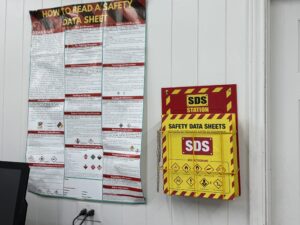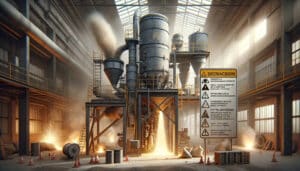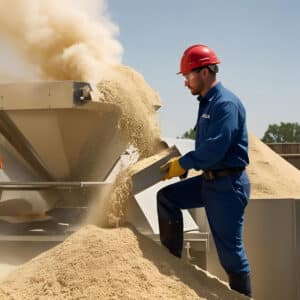We also offer
What Is a What-If and Checklist Review?
What-If and Checklist Reviews are two essential risk assessment tools used in the process industry to identify hazards and improve operational safety.
What Is a What-If Review?
A What-If Review is a creative brainstorming technique where a cross-functional team explores potential risks by asking hypothetical “what-if” questions. These questions target possible failures, human errors, or external events that could lead to unsafe conditions. The team evaluates the likelihood and severity of each scenario, identifies existing safeguards, and recommends risk reduction measures.
This flexible approach is especially useful in:
-
Early design stages
-
Process modifications
-
Uncovering less obvious hazards
What Is a Checklist Review?
A Checklist Review is a structured assessment that uses a predefined list of safety questions or criteria based on:
-
Industry standards
-
Regulatory requirements (e.g., OSHA PSM)
-
Lessons from past incidents
The review team systematically goes through each checklist item to ensure that all critical aspects of process safety are addressed. This method is ideal for routine evaluations, audits, and compliance verification.
Why Are What-If and Checklist Reviews Important?
Using both What-If and Checklist Reviews ensures a comprehensive and proactive approach to hazard identificationand risk management.
Key benefits:
-
Identifies both common and rare hazards
-
Encourages broad team input and critical thinking
-
Ensures systematic coverage of safety elements
-
Supports regulatory compliance (e.g., OSHA, EPA)
-
Provides a clear path to risk mitigation and safety improvement
How to Conduct a What-If and Checklist Review
-
Form a Multidisciplinary Team – Include experts in engineering, operations, safety, and maintenance.
-
Define Scope & Objectives – Focus the review on specific processes or systems.
-
Select or Customize Checklists – Align with industry standards and facility-specific needs.
-
Facilitate What-If Sessions – Brainstorm scenarios involving equipment failure, human error, and external impacts.
-
Assess Risks & Consequences – Analyze severity and likelihood for each scenario or checklist item.
-
Evaluate Existing Safeguards – Document current controls and their effectiveness.
-
Recommend Additional Safeguards – Propose improvements where risk levels are too high.
-
Document the Review – Create detailed reports of findings, recommendations, and action plans.
-
Assign Actions & Responsibilities – Ensure follow-up and accountability.
-
Update Regularly – Revisit reviews after changes or incidents.
-
Train Personnel – Educate your team on outcomes and new safety measures.
-
Monitor Implementation – Track progress and revalidate effectiveness.
Why Perform What-If and Checklist Reviews?
Implementing What-If and Checklist Reviews helps you:
-
Proactively identify and control hazards
-
Improve safety culture and awareness
-
Prevent incidents and downtime
-
Comply with OSHA PSM, EPA RMP, and other standards
-
Drive continuous improvement in your process safety management system
Why Choose Prime Process Safety Center
At Prime Process Safety Center, we provide expert-led What-If and Checklist Reviews that align with your operations and safety goals.
What Sets Us Apart:
-
Deep Expertise in Process Safety
-
Skilled Facilitation of What-If Sessions
-
Customized Safety Checklists
-
Systematic, Proven Methodologies
-
Clear, Actionable Documentation
-
Focus on Compliance and Risk Reduction
-
Ongoing Support and Training
FAQ
1. What are What-If and Checklist Reviews?
These are structured risk assessment techniques used to identify and analyze potential hazards in industrial processes. What-If Reviews involve brainstorming potential hazardous scenarios, while Checklist Reviews use predefined lists of questions to assess safety.
2. Why are What-If and Checklist Reviews important in process safety?
They are critical for identifying potential risks and ensuring that all aspects of process safety are considered, helping to prevent accidents and ensure compliance with safety regulations.
3. How often should What-If and Checklist Reviews be conducted?
Regular reviews are recommended, typically annually, or whenever there are significant changes to processes, equipment, or regulations.
4. Who should be involved in these reviews?
A multidisciplinary team including process engineers, safety professionals, and operational staff should be involved to provide diverse perspectives and expertise.
5. What kind of training is required for conducting these reviews?
Personnel should be trained in risk assessment techniques, process safety management, and specific procedures relevant to the industry.
6. How do What-If Reviews differ from Checklist Reviews?
What-If Reviews are more open-ended and brainstorming-based, while Checklist Reviews are structured and based on specific pre-defined criteria.
7. Can these reviews be used for regulatory compliance?
Yes, they help in identifying potential non-compliances with safety regulations and standards, aiding in maintaining regulatory compliance.
8. What is the role of a facilitator in these reviews?
A facilitator guides the review process, ensures that all relevant hazards are considered, and that discussions stay focused and productive.
9. How are the findings from these reviews documented?
Findings are typically documented in detailed reports outlining identified hazards, risk levels, and recommended mitigation measures.
10. Can What-If and Checklist Reviews be integrated with other risk assessment methods?
Yes, they are often used in conjunction with other methods like HAZOP for a more comprehensive risk assessment.














